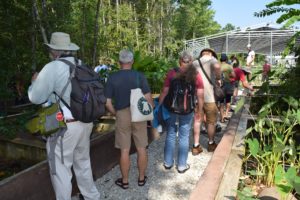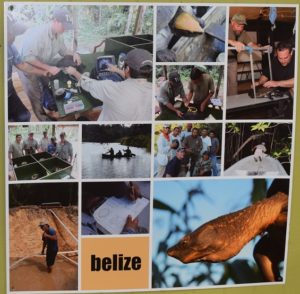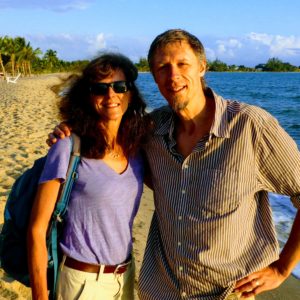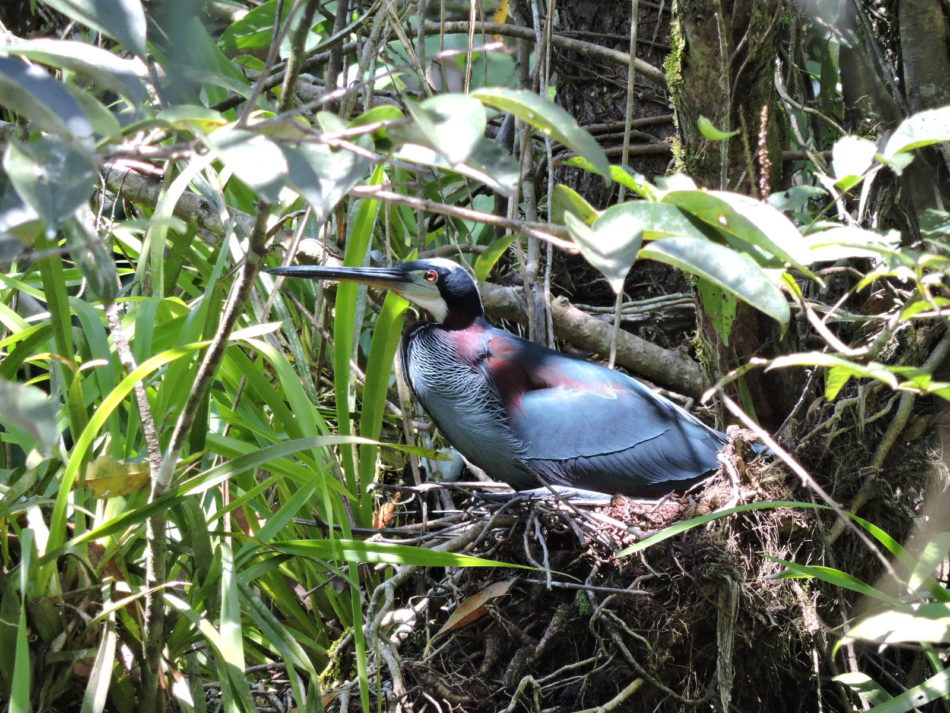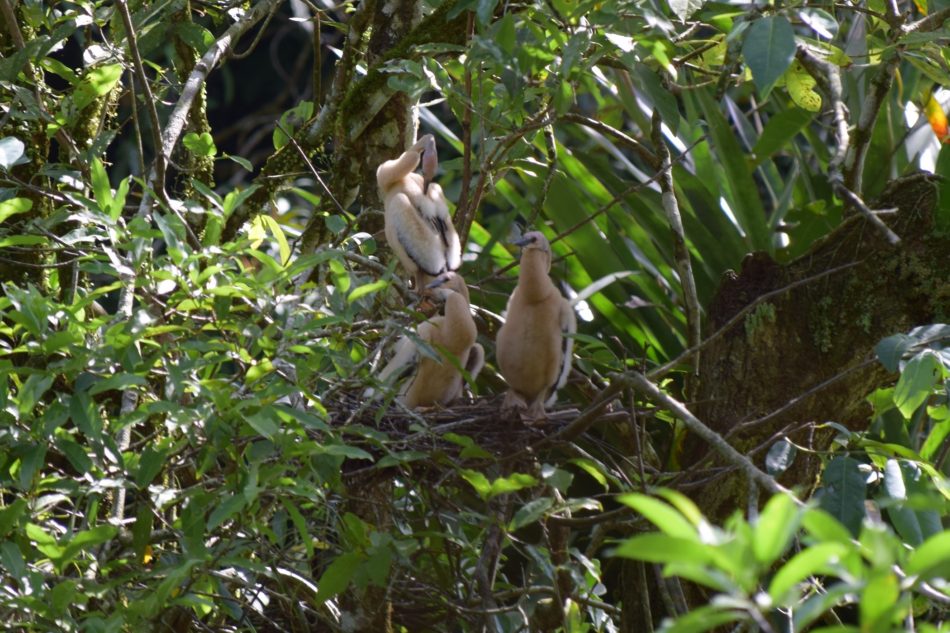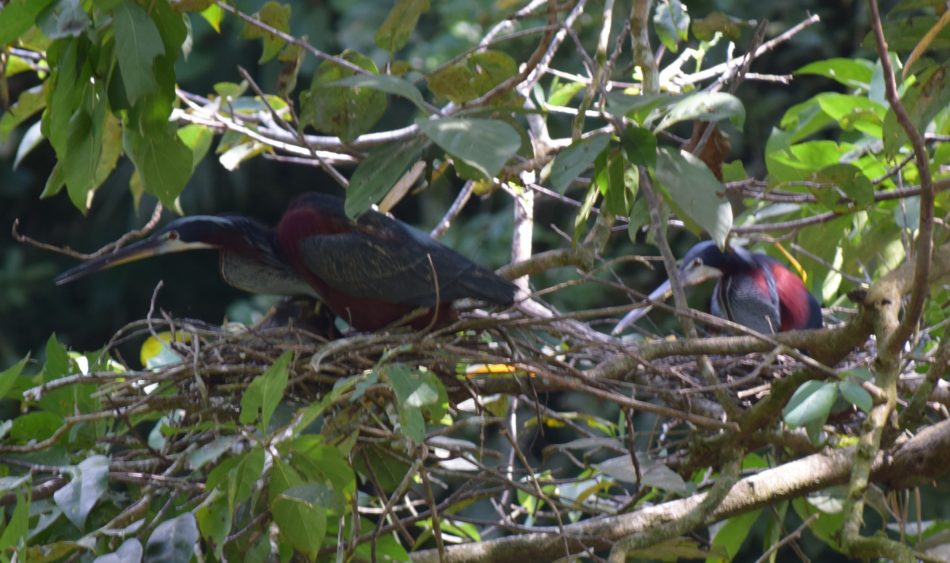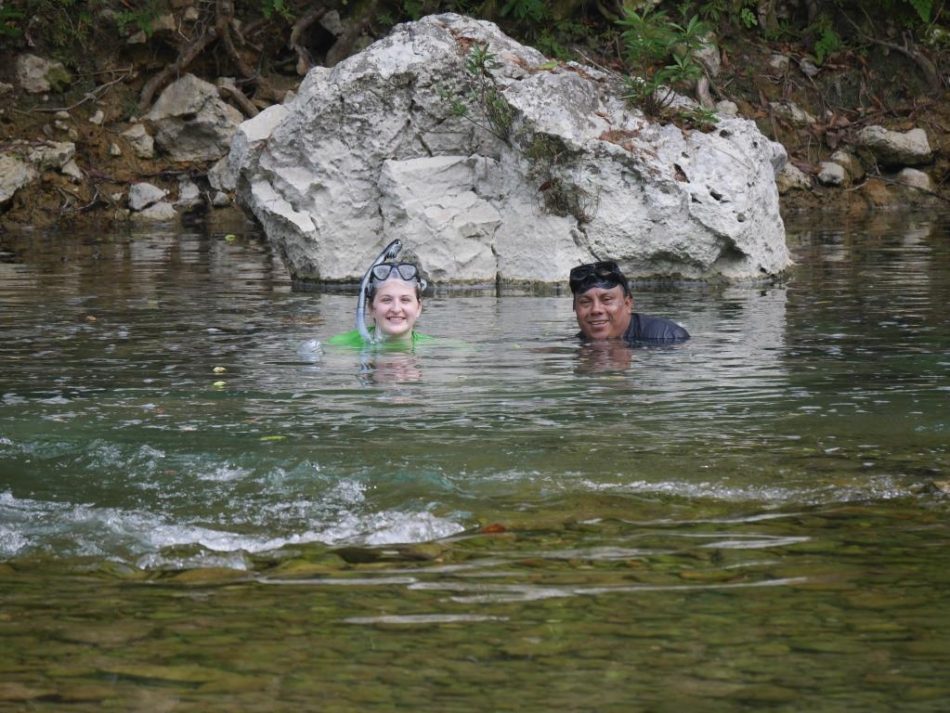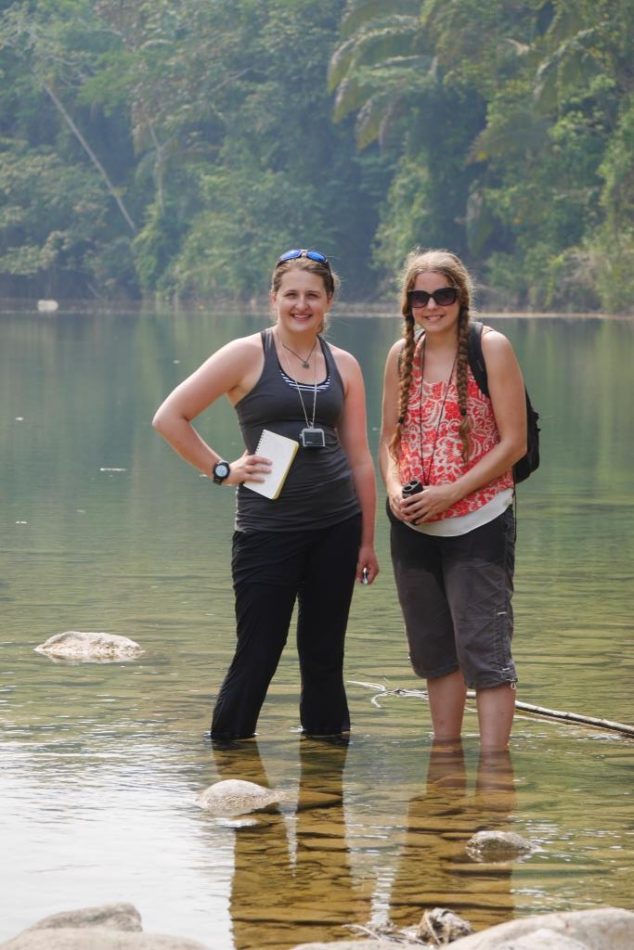International Turtle Conservation and Biology Symposium
The Hicatee Conservation and Research Center (HCRC) was featured in the 15th Annual Symposium on the Conservation and Biology of Tortoises and Fresh Water Turtles. The meeting, which is the largest gathering of non-marine turtle biologists in the world, was held in historic Charleston, South Carolina and attended by over 300 participants.
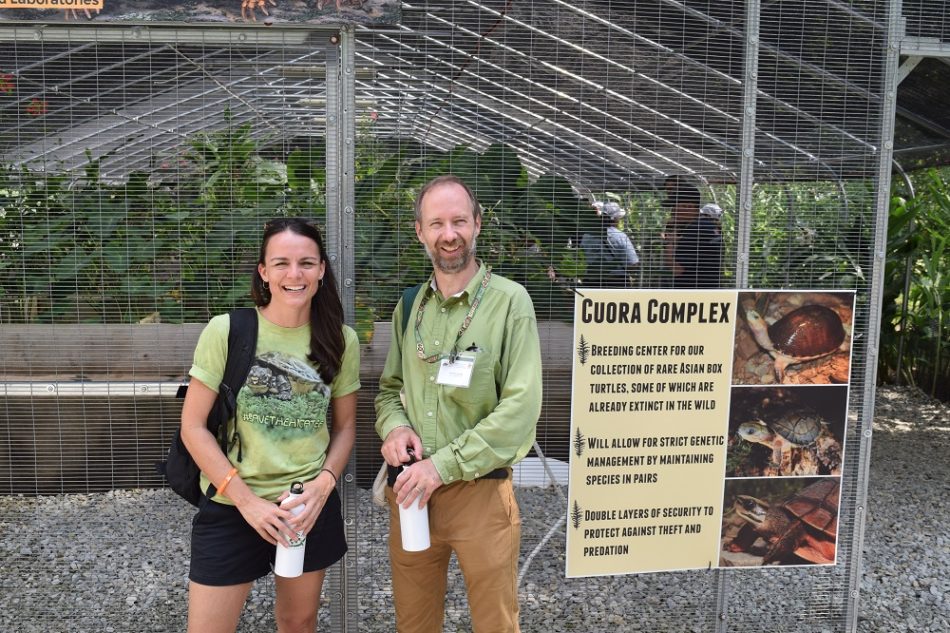
Heather Barrett and Peter Paul van Dijk at the Turtle Survival Center. Peter Paul was honored during the symposium with the John L. Behler Turtle Conservation Award
Turtle Survival Center Field Trip
The pre-symposium field trip to the new Turtle Survival Center was a highlight. The TSC is owned by Turtle Survival Alliance and represents a new and important direction for the organization. The Center is a captive setting for turtle and tortoise species that are critically endangered and that face an uncertain future in the wild. The TSC is dedicated to building up robust captive populations of these species. On Sunday, hundreds of participants were bused from the conference hotel to the TSC in order to tour the Center’s many facilities including the various complexes, the incubation room, and areas that are still being developed.
Hicatee Presentations
Symposium activities officially began on Monday. BFREE staff were honored to be invited to present the latest news and outcomes at the HCRC. As part of the Captive Husbandry session, Jacob Marlin detailed the development of the HCRC as a facility and described what has been learned on site about the reproductive biology of the Hicatee.
Heather Barrett presented “Country-wide Efforts to Promote the Conservation of the Critically Endangered Central American River Turtle (Dermatemys mawii) in Belize, Central America.” She outlined the recent history of conservation outreach for the hicatee including the formation of the Hicatee Conservation Network and the
production of a documentary film. Heather’s session was followed by a special film screening of “Hope for Belize’s Hicatee: Central American River Turtle.” This was the first time the new documentary by Richard and Carol Foster was shown publicly. “Hope for Belize’s Hicatee,” was well received by the audience who was eager to view rare underwater footage of the turtle and appreciated the breadth of information covered in the short film.
In addition to BFREE staff presenting HCRC findings at the conference, Nichole Bishop, Ph.D. Candidate from the University of Florida, described her research related to the 2017 hicatee hatchlings in her talk, “Is Coprophagy an Important Management Decision for the Captive Breeding of Herbivorous Turtles?”
The symposium offered many opportunities for conversations and brainstorming on issues relating to the hicatee and other endangered turtles and tortoises. The symposium was an uplifting and inspirational event and BFREE staff left feeling impressed by the countless individuals dedicating their lives to the conservation of turtle species around the globe.

